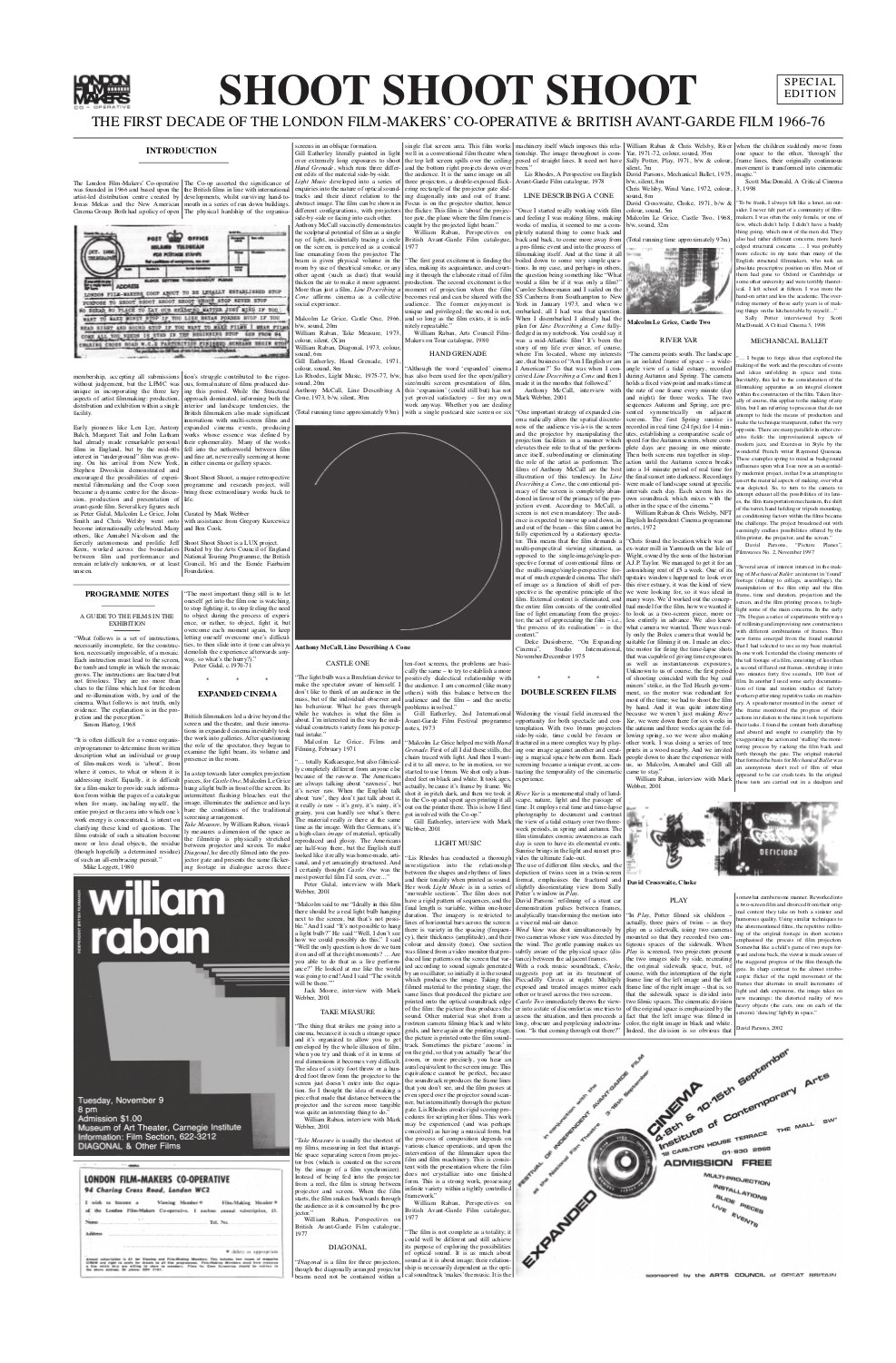Johansson, Kuznetsov, Zimprich (eds.): Post Funding Eastern Europe (2007) [English/Ukrainian]
Filed under brochure | Tags: · art system, contemporary art, eastern europe

“The Center for Communication and Context (CCCK) has been developed during a residency period in Kiev in August 2006 as a collaboration between Ingela Johansson, Volodymyr Kuznetsov and Inga Zimprich. Within the exhibition Private With Public CCCK started to investigate its host-center’s history, ideological background and future perspectives. Getting involved with a former Soros institution the idea emerged to follow other cases of Soros Centers and to investigate other East-European institutions which were established with the help of or dependant on Western cultural funding. Under the term of Post-funding we would like to expand this project during 2007, researching emerging local financial models and the interdependencies developed in cultural East-West exchange.
Since our first visit to the Center for Contemporary Art, Kiev (CCA) the local situation transformed significantly. With the appearance of the Pinschuk Art Center CCA’s exclusive role to provide a window to and from the West has changed. Given the space to shift its focus CCA is reformulating its program aiming to provide more space for experimentation, research and exhibition practices beyond the merely visual. However, the relevant decision of the Renaissance Foundation whether to support the Center in the future is still pending.” (editors)
Editors: Ingela Johansson, Volodymyr Kuznetsov, Inga Zimprich
Published by CCCK – Center for Communication and Context, Kyiv; and R.E.P. (Revolutionary Experimental Space), Kyiv
28 pages
Licensed under Creative Commons Attribution-ShareAlike 2.5 license
Bureau for Open Culture: On Symptoms of Cultural Industry (2011)
Filed under brochure | Tags: · art, culture, culture industry

On Symptoms of Cultural Industry investigates the role of artistic and cultural production in relation to the economic and social life of North Adams, Massachusetts. Through original research interviews with employees of Sprague Electric–the manufacturer that originally occupied the massive industrial complex that is today MASS MoCA–and in response to living in this city, the work comprehensively manifests as performance, video, installation and a book. It forms an intimate portrait of a city that has transformed from an economy of manufacturing goods and materials to increasingly manufacturing culture and information.
By James Voorhies, with Timothy Nazzaro, Nate Padavick, Rachel Sherk, Cassandra Troyan
Presented as part of Open Engagement in Portland, Oregon, in May 2011, and at MASS MoCA in North Adams, Massachusetts, in July.
32 pages
Shoot Shoot Shoot: The First Decade of the London Film-Makers’ Co-operative and British Avant-Garde Film 1966-1976 (2002)
Filed under brochure | Tags: · 1960s, 1970s, expanded cinema, experimental film, film, film history, united kingdom
Broadsheet for the film exhibition curated by Mark Webber and organised by LUX London. Includes film descriptions, chronology of events and developments 1966-76, and the article by A.L. Rees.
“The London Film-Makers’ Co-operative was founded in 1966 and based upon the artist-led distribution centre created by Jonas Mekas and the New American Cinema Group. Both had a policy of open membership, accepting all submissions without judgement, but the LFMC was unique in incorporating the three key aspects of artist filmmaking: production, distribution and exhibition within a single facility.
Early pioneers like Len Lye, Antony Balch, Margaret Tait and John Latham had already made remarkable personal films in England, but by the mid-60s interest in “underground” film was growing. On his arrival from New York, Stephen Dwoskin demonstrated and encouraged the possibilities of experimental filmmaking and the Coop soon became a dynamic centre for the discussion, production and presentation of avant-garde film. Several key figures such as Peter Gidal, Malcolm Le Grice, John Smith and Chris Welsby went onto become internationally celebrated. Many others, like Annabel Nicolson and the fiercely autonomous and prolific Jeff Keen, worked across the boundaries between film and performance and remain relatively unknown, or at least unseen.
The Co-op asserted the significance of the British films in line with international developments, whilst surviving hand-to-mouth in a series of run down buildings. The physical hardship of the organisation’s struggle contributed to the rigorous, formal nature of films produced during this period. While the Structural approach dominated, informing both the interior and landscape tendencies, the British filmmakers also made significant innovations with multi-screen films and expanded cinema events, producing works whose essence was defined by their ephemerality. Many of the works fell into the netherworld between film and fine art, never really seeming at home in either cinema or gallery spaces.
Shoot Shoot Shoot, a major retrospective programme and research project, will bring these extraordinary works back to life.
Curated by Mark Webber with assistance from Gregory Kurcewicz and Ben Cook.
Shoot Shoot Shoot is a LUX project.” (from Introduction)
Publisher Lux, London, May 2002
8 pages
project
more (touring programme, Lux Online)
overview of the touring programme (George Clark, Senses of Cinema)
DVD anthology (published in 2006)
PDF (85 MB, added on 2014-12-22), Scribd
Comment (0)

